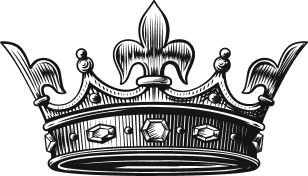Your Highness:
I want my writing to look professional. Actually, that may be too ambitious a goal. I’d settle for avoiding embarrassing mistakes. Specifically, I can’t seem to figure out where the apostrophes go, or don’t … or why. Please help me before my lack of knowledge rears its’ it’s its ugly head. You see what I mean.
My dear Subject,
I do indeed. When it comes to writing, we all have our weaknesses. Yes, even the Grammar Queen must repeatedly spell-check hors d’oeuvres, for example; so many vowels in a row can leave one at once flustered and enervated, much as a surfeit of caviar in successive courses dulls one’s desire to continue the banquet. If apostrophes are your Waterloo, the best thing you can do is acknowledge the fact, then get to work.
Now, the good news is that, the vast majority of the time, apostrophe use follows a few simple rules. It is perhaps the one common exception to those rules (its vs. it’s) that, as your letter shows, confuses so many and leads to so much angst. Let’s not shirk our duty, but rather buck up and dive right in: Herewith, four simple rules for using apostrophes correctly and confidently.
1. Plural nouns need no apostrophe.
The ladies in waiting found it a challenge to coordinate their calendars when the season approached. So many gala events to attend, so little time.
2. Apostrophes used with nouns indicate possession.
Kate wasn’t sure whether to laugh or cry when she found the prince’s pram full of the footmen’s calling cards, each and every one of them smeared with raspberry jam.
Note that plural nouns ending in s take the possessive apostrophe after the s (the royals’ snapshots). Those not ending in s add an apostrophe and an s (the footmen’s dismay). Singular nouns ending in s can go either way; just be consistent within a document.
William’s Facebook post on the incident amused friends and family alike. Alas, Charles’s (Charles’) reaction was not so sanguine.
3. In contractions, apostrophes indicate something left out.
Wouldn’t = would not; shan’t = shall not; wasn’t = was not. And so on.
I wouldn’t wear the serape to the garden party if I were you. Really, darling—not with your hunting boots. You shan’t ever live it down if that awful photographer shows up. Last time she got a shot of Clarissa in her nightgown, and the press wasn’t at all kind.
4. Its is possessive. It’s is a contraction (meaning it is).
You can see where it’s easy for writers to get confused. Alas, there’s nothing for it but to memorize the distinction:
- Its is a personal pronoun (on par with his, hers, and yours). While the word indicates possession, it does not take an apostrophe: The pony was not fond of its rider’s attempts at guidance, and did not appreciate the repeated tugs on its reins. However, it did enjoy the snacks the young prince left in its stall, especially the raspberry petits fours.
- It’s is a contraction of it is or it has. It’s a mystery—I don’t know where the desserts have gone. Would it be gauche to ask the footmen to search that gentleman’s serape? I’m sure it’s loaded with pockets.
- Its’ is not a word.
Yours precisely,
The Grammar Queen


